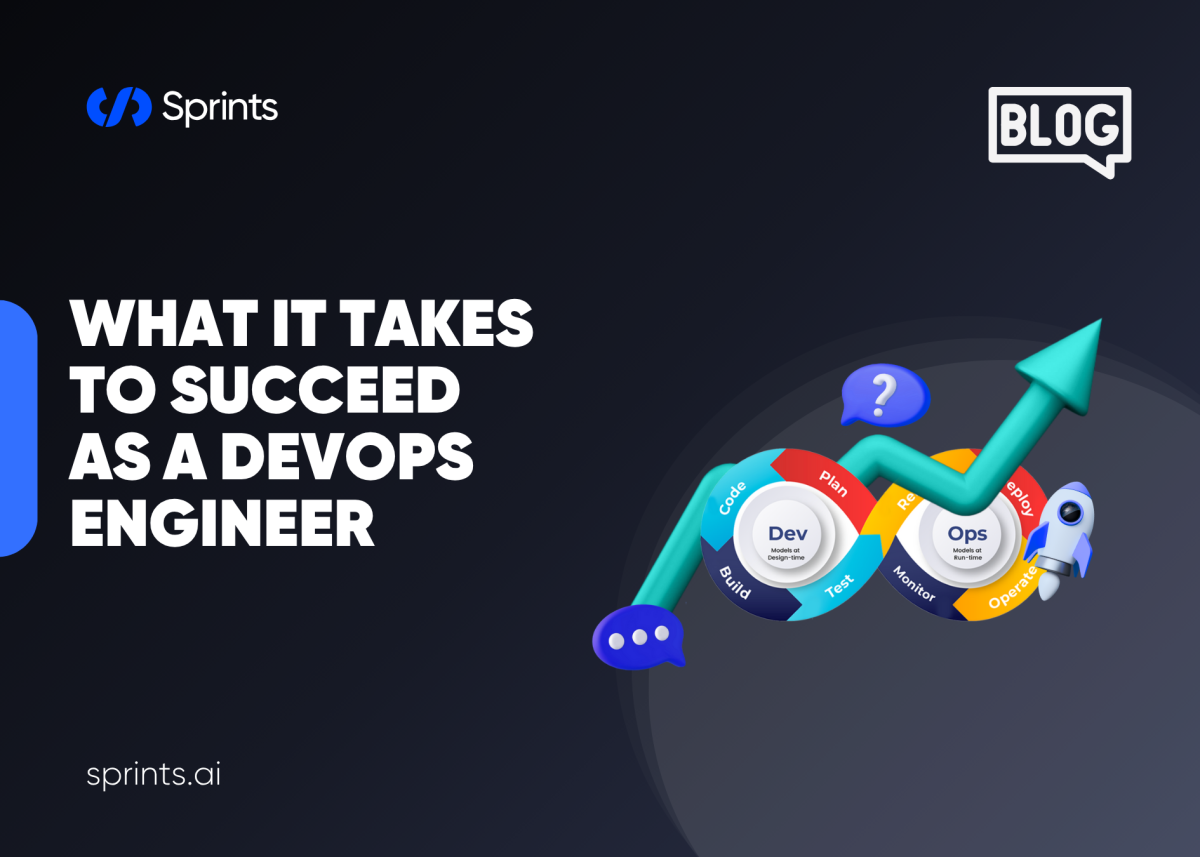
Landing and thriving in a DevOps role means more than knowing your way around CI/CD tools or writing clever automation scripts. It’s about teaming up, experimenting often, and always keeping the big picture in mind. If you’ve ever wondered how to become a DevOps engineer in 2025, you’re in the right place. In the next few minutes, you’ll pick up practical tips on skills, tools, and mindset shifts that make a difference.
Embracing the DevOps Mindset
Collaboration Over Silos
Nothing stalls progress like “that’s not my job” attitudes. Great DevOps engineers…
- Pair up: Shadow operations one day, sit with developers the next.
- Share wins and fails: Host quick “show-and-tell” sessions after a deployment or outage.
Continuous Improvement, Not Perfection
Think “best practices for DevOps engineering”—not “perfect right away.”
- Iterate in small steps: Tweak your deployment pipeline today, tweak monitoring tomorrow.
- Celebrate root-cause discoveries: A 5-minute post-mortem beats weeks of silent finger-pointing.
Building Your Technical Foundation
Automation and Scripting
You don’t need to be a Python guru—but you should automate the boring stuff.
- Start simple: Write a Bash script that spins up and tears down a test server.
- Level up: Learn enough Python or PowerShell to parse logs or call cloud APIs.
Mastering CI/CD Pipelines
Smooth, predictable deployments are DevOps gold.
- Toolbox: Jenkins, GitLab CI, GitHub Actions, CircleCI—pick one and stick with it.
- Quick wins: Keep build and test phases under five minutes. Fast feedback keeps everyone happy.
Containerization and Orchestration
If you haven’t tried Docker yet, today’s the day.
- Containerize one service: Package a small app and run it locally.
- Scale with Kubernetes: Once you’re comfortable, explore pods, services, and deployments.
Infrastructure as Code (IaC)
Forget manual server clicks—declare your entire setup in code.
- Choose your flavor: Terraform, CloudFormation, or Ansible can all work.
- Version control everything: Treat your network, databases, and load balancers like your app code.
Soft Skills That Set You Apart
Clear Communication
Writing clear runbooks, architecture diagrams, and status updates is half the battle.
- Keep notes concise: A one-page guide on “How to recover from a failed deploy” is more useful than a 20-page manual.
- Use your voice: Regularly demo new tooling or process tweaks to your team.
Resilience and Problem-Solving
When alarms blare at 2 AM, stay calm and follow your incident playbook.
- Prioritize fixes: Focus on quick rollbacks or feature toggles before deep dives.
- Learn out loud: After tensions cool, share what went well and what could improve.
Real-World Tools and Practices
Monitoring and Logging
Without visibility, you’re flying blind.
- Essential stack: Prometheus + Grafana for metrics, ELK (Elasticsearch, Logstash, Kibana) for logs.
- Actionable alerts: Set thresholds that matter—CPU spikes, error rates, or queue backlogs.
Cloud Platforms
Hands-on is the best teacher—spin up free-tier accounts on AWS, Azure, or GCP.
- Experiment: Launch a serverless function, play with managed databases, or test load balancers.
- Compare services: Notice how AWS ECS differs from Azure Kubernetes Service or Google Cloud Run.
Security and Compliance
Shift security left by embedding checks into your pipeline.
- Static analysis: Tools like SonarQube or Snyk catch issues before deployment.
- Collaborate: Work with security teams to bake in encryption, secrets management, and compliance scans.
Crafting Your Career Path
Education and Certifications
Wondering about the best DevOps certification path? Here’s a quick list:
- AWS Certified DevOps Engineer – Focuses on AWS-native tooling.
- Certified Kubernetes Administrator (CKA) – Proves you can manage real clusters.
- HashiCorp Terraform Associate – Validates your IaC chops.
Hands-On Portfolio Projects
Nothing beats real code in a GitHub repo:
- Full-stack demo: Build a simple web app, containerize it, deploy via CI/CD, and manage infra as code.
- Open source contributions: Even small bug fixes show you can work in team environments.
Networking and Mentorship
Your next big break might come from a Slack channel or meetup.
- Join communities: DevOpsDays, local meetups, online forums like DevOps Stack Exchange.
- Find a mentor: Look for someone a few years ahead who can review your work and share career advice.
Maintaining Momentum
Feedback Loops
Regular check-ins keep processes sharp:
- Dev-to-Ops survey: Ask your devs how they feel about deployment speed and reliability.
- Ops-to-Dev survey: Gather feedback on the quality of delivered code.
Standardization and Templates
Save time and avoid errors with reusable patterns:
- Pipeline templates: A base YAML file everyone starts from.
- Infrastructure modules: Pre-written Terraform or CloudFormation modules for common services.
Staying Curious
DevOps never stands still—service meshes, GitOps, edge computing, you name it.
- Weekly learning sessions: Share new tools or techniques with your team.
- Conference recaps: Attend virtually or in person, then present highlights to colleagues.
Overcoming Common Hurdles
Resistance to Change
Sometimes folks push back—here’s how to win them over:
- Show real ROI: “Our new pipeline cut deploy time by 40%.”
- Offer training: Host lunch-and-learns or one-on-one sessions.
Scaling Challenges
As usage grows, your initial setups may hit limits.
- Autoscaling: Use cloud-native autoscaling groups or Kubernetes Horizontal Pod Autoscaler.
- Service design: Break monoliths into microservices to distribute load.
Security Trade-Offs
Balancing speed and security can feel like walking a tightrope.
- Least privilege: Grant only the permissions you need, when you need them.
- Automated patching: Schedule regular updates and test against canary environments.
Conclusion
So, what does it take to succeed as a DevOps engineer? It’s a blend of hands-on tech skills like containerization, automation, and infrastructure as code—plus the soft side: clear communication, teamwork, and a drive to keep improving. If you’re plotting steps to become a successful DevOps engineer, start small, learn consistently, and share what you discover.



